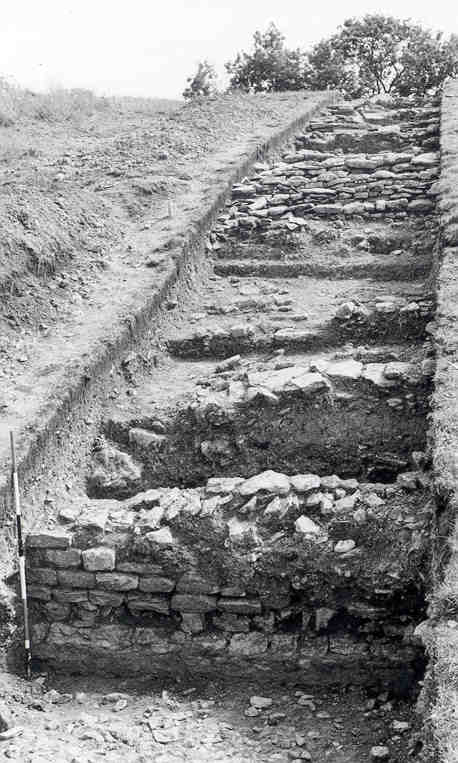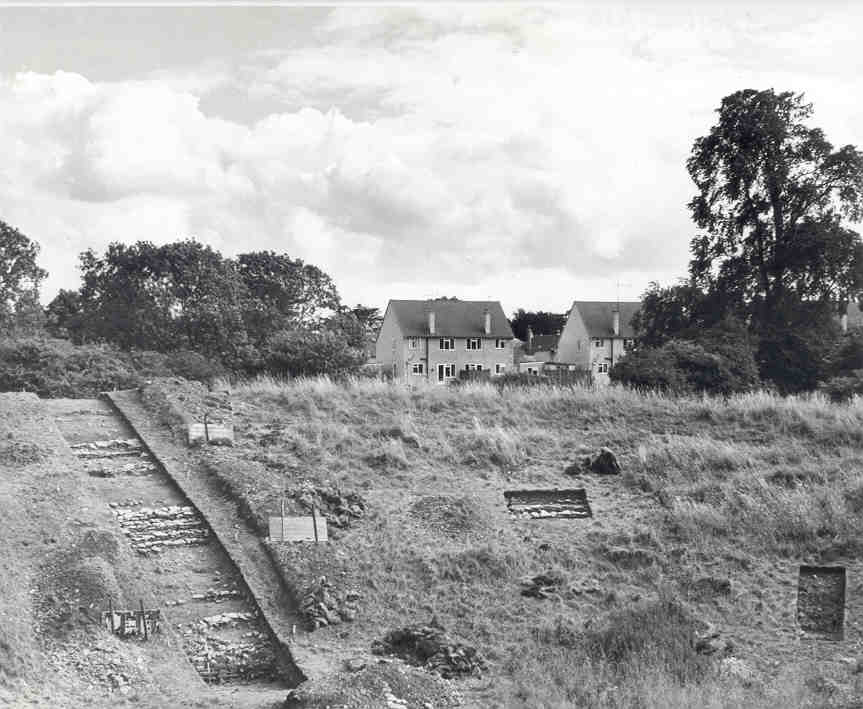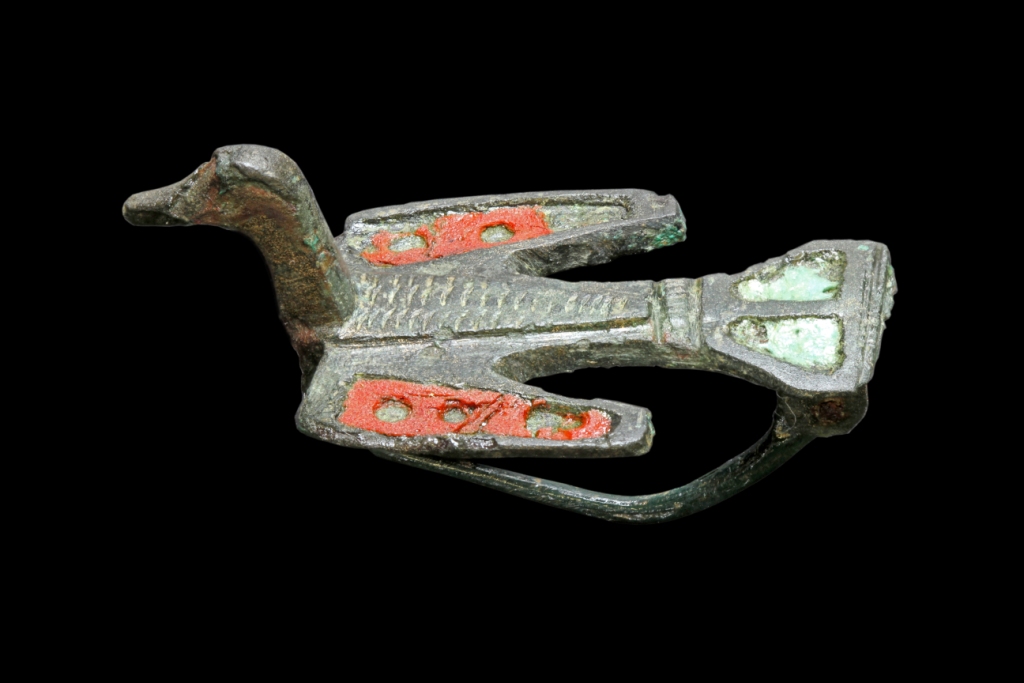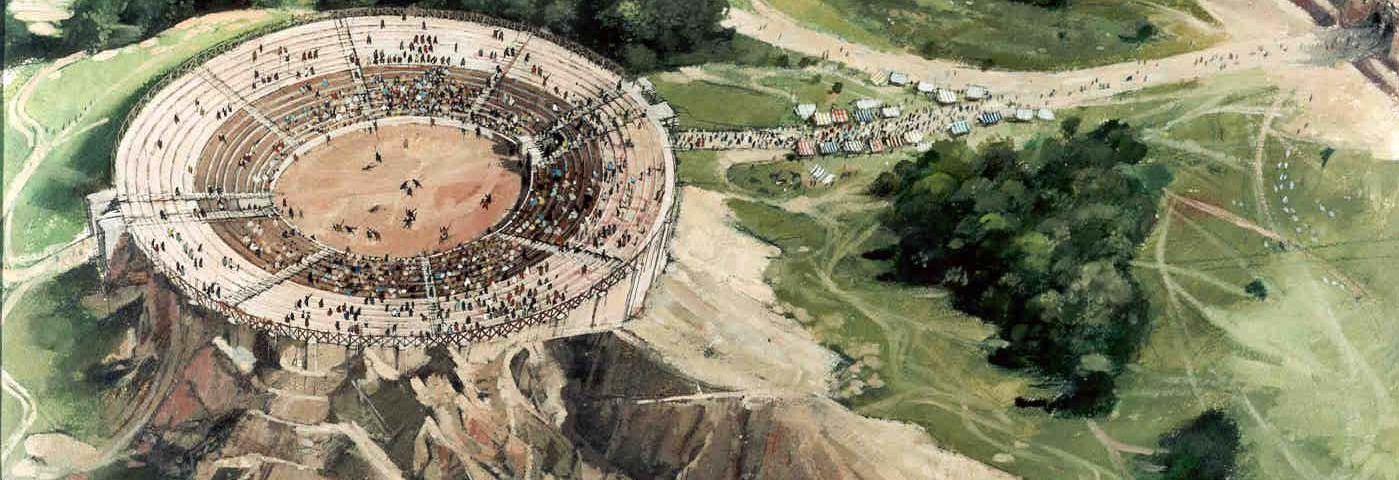Blog Post by Phillip Brant-Simmons
The amphitheatre in Cirencester is the second biggest in Britain after the one found in London, it dates as far back as the early 2nd Century, and could have held the entire population of Corinium at its height, around 8,000 people.
The amphitheatre began its life as a simple quarry, it’s believed that most of the stone for the town came out of it. Once the town was mostly built it was already nearly there to being the right shape for an amphitheatre with tiered seating.


Cirencester’s amphitheatre was excavated in 1966 in an attempt to work out its construction. They found a number of things which helped to broaden the understanding of the Amphitheatre. One thing they found was some wall plaster that still had a bit of red paint on. This tells us that the amphitheatre would originally been covered in plaster to be more attractive than the bare stone seating it later became. Two objects that are on display in the museum are an enamelled brooch in the shape of a bird as well as the staff of a caduceus, a staff wrapped by two snakes often carried by the god Mercury.

There were also a few other objects which point to a long and varied use of the amphitheatre through time that have not had the chance to go on display before. These include some pieces of glass that may be Roman, as well as a stone marble which gives an insight into the games the children would play. The glass is fascinating because most of the glass in the Roman Empire came from the coast of Egypt, and so it has travelled from one distant corner of the Empire to the other here in Britain.
From later periods there are some medieval keys that show some form of use. It’s likely it was used as a marketplace, and another name for the amphitheatre is “The Bull Ring” suggesting either a cattle market or a place to watch bull baiting. The latter is highly unlikely however.
Closer to the present day, two lead musket balls were found dating to the 1600s. Cirencester was the place of a battle known as the Storming of Cirencester during the English Civil War, and the amphitheatre would have been a naturally defensive position for either side. Could these musket balls have been a part of that battle? Another theory is that the amphitheatre could have been used as a firing range at that time.
Working together with AQIVA AQIVA | Friends of the Amphitheatre, Querns Wood and Four Acre Field. Corinium Museum will be displaying a selection of objects at the Bingham House throughout January and February 2024, so do go and see them!
Phillip Brant-Simmons
Collections Engagement Assistant











Comments
Marc Morris mentions in his book on the Anglo-Saxons that in 935 Aethelstan used the amphitheatre as the setting for a gathering of the ‘subreguli’ from across the British Isles. I wasn’t able to find the primary source